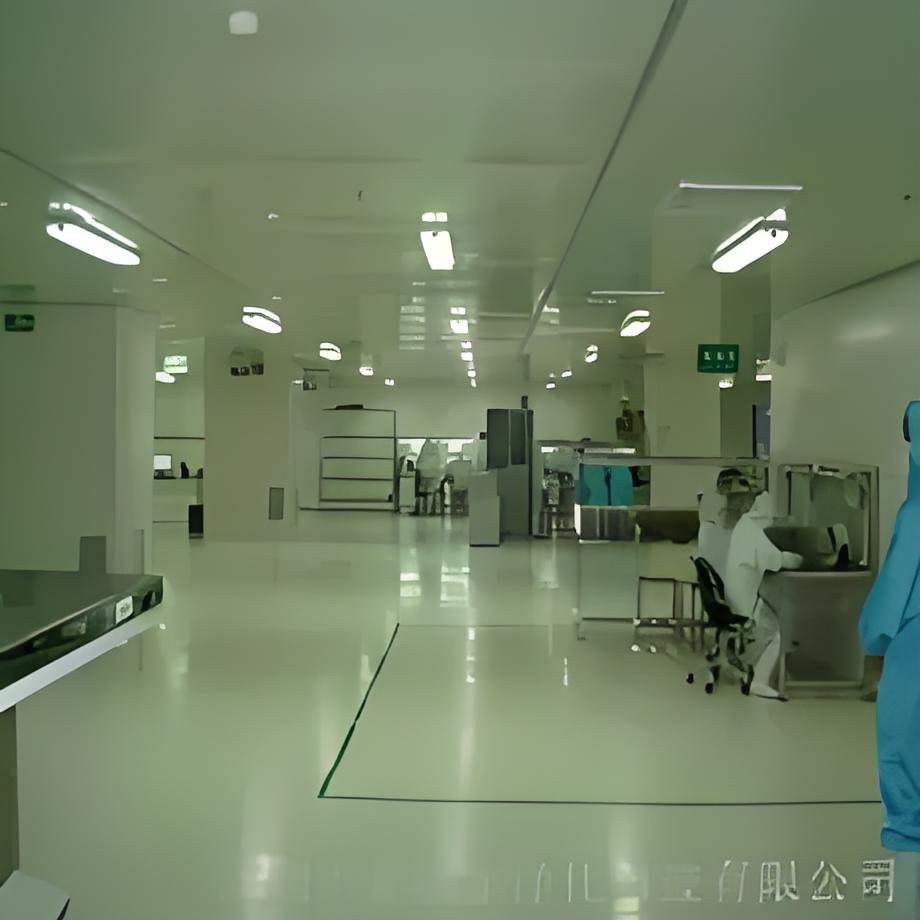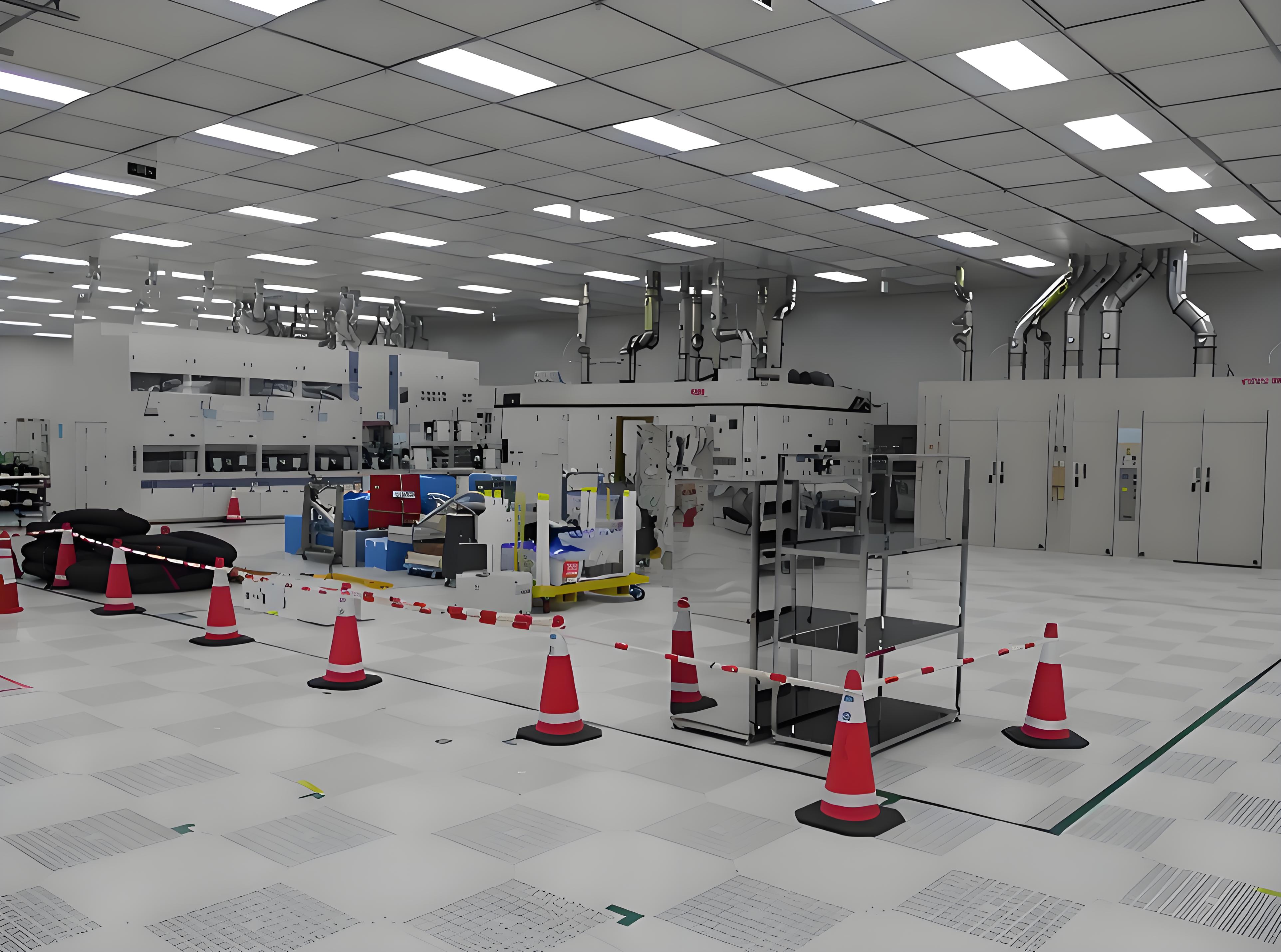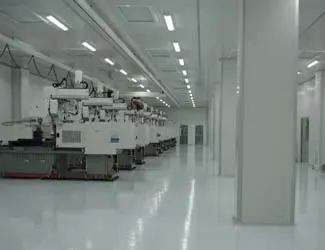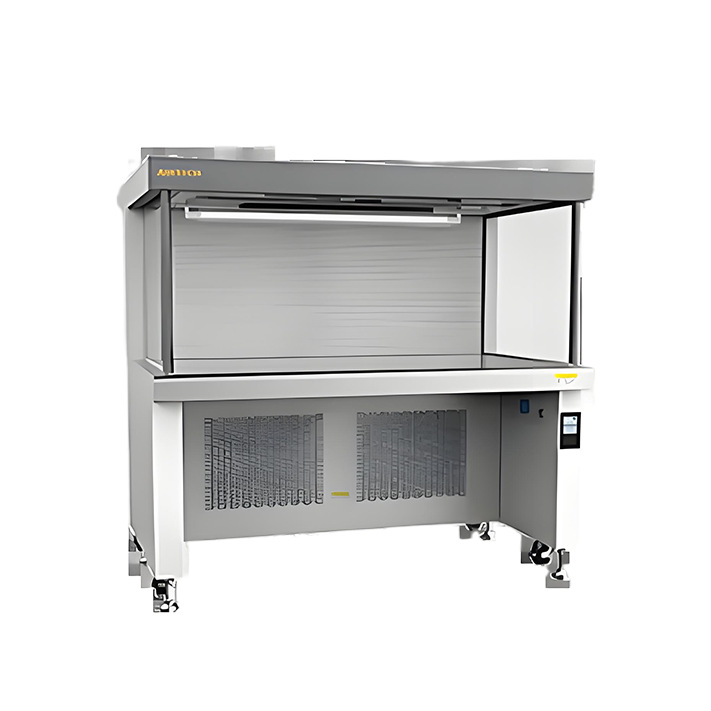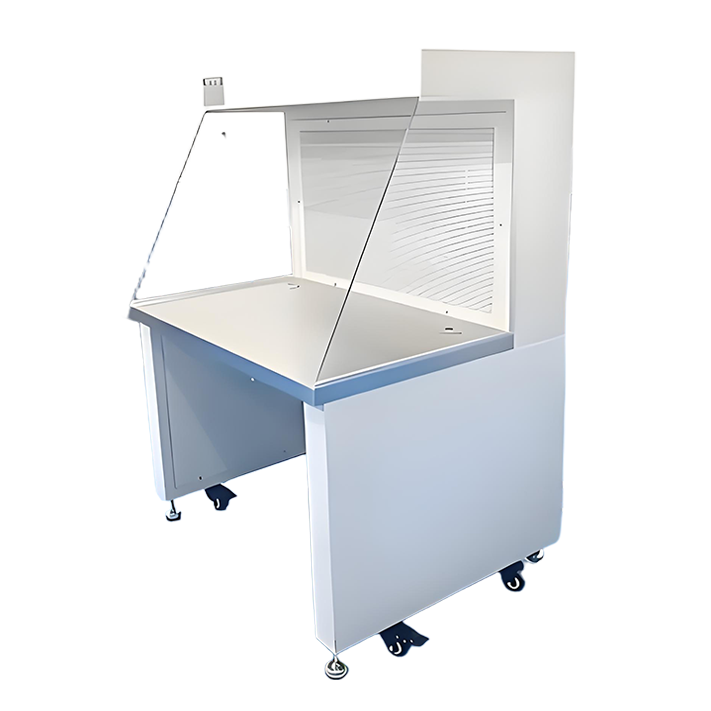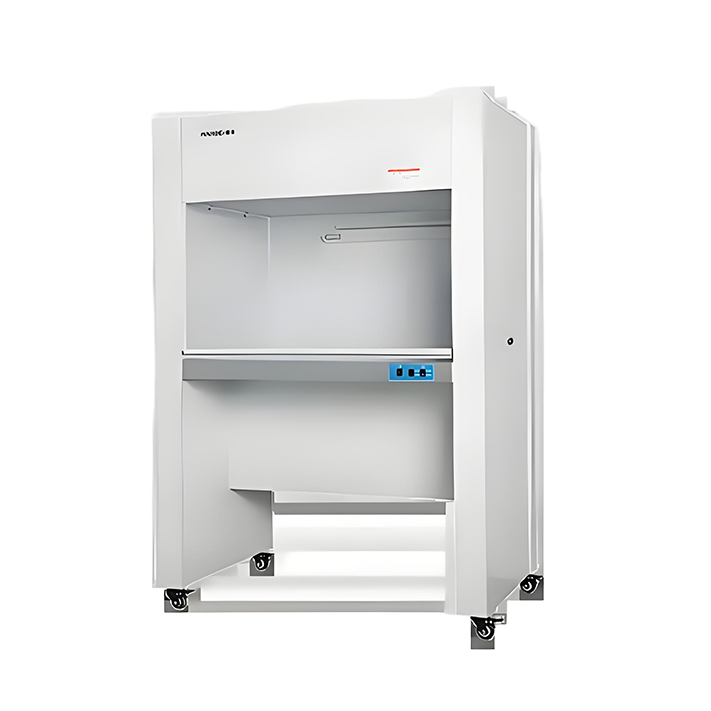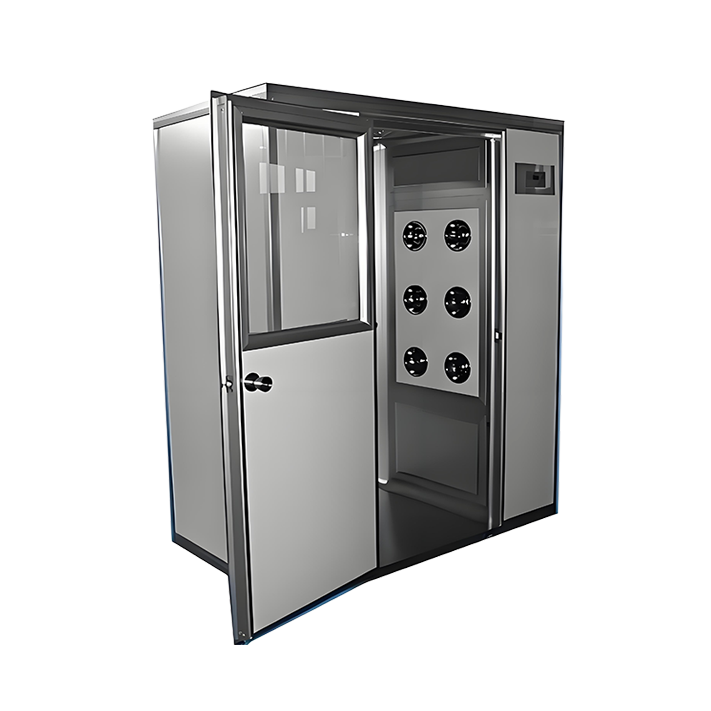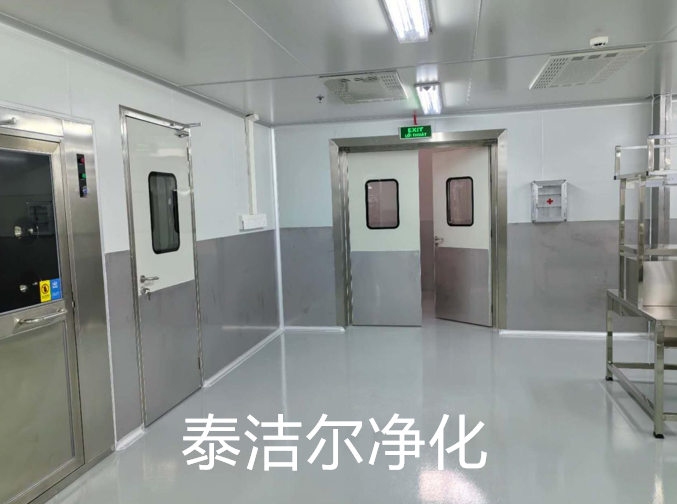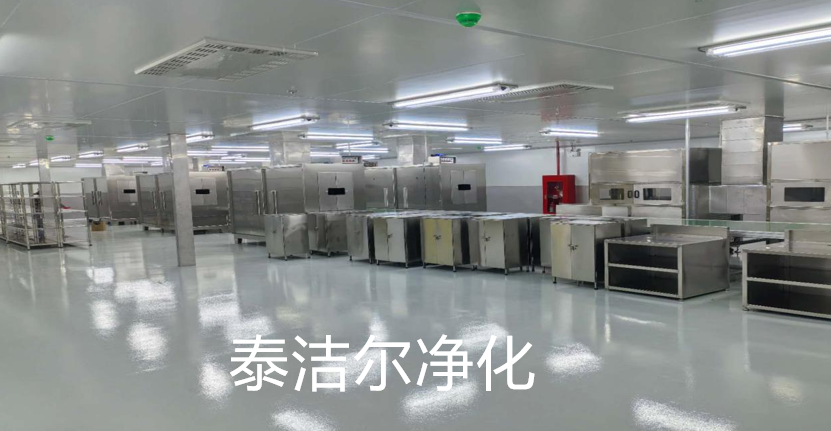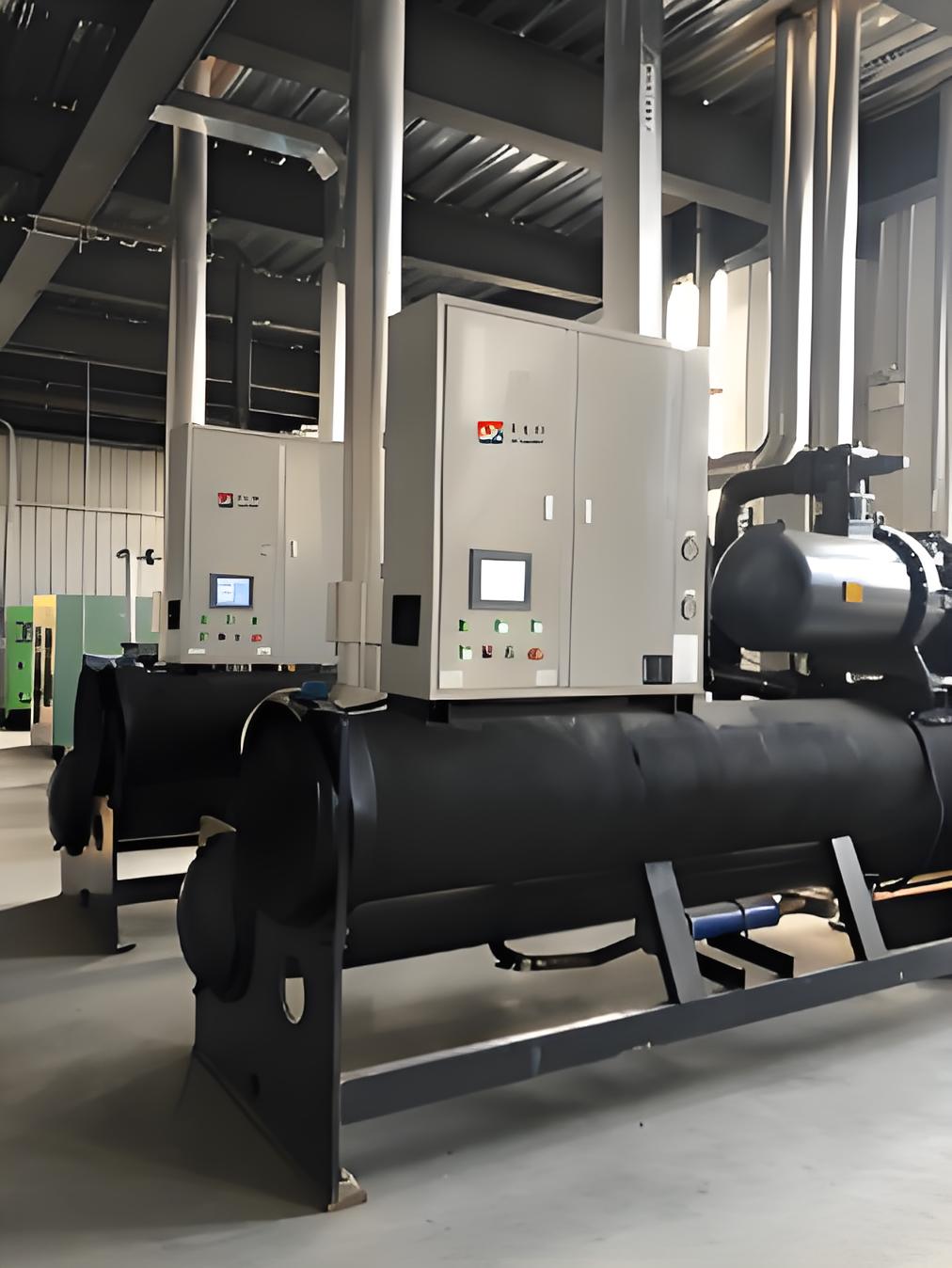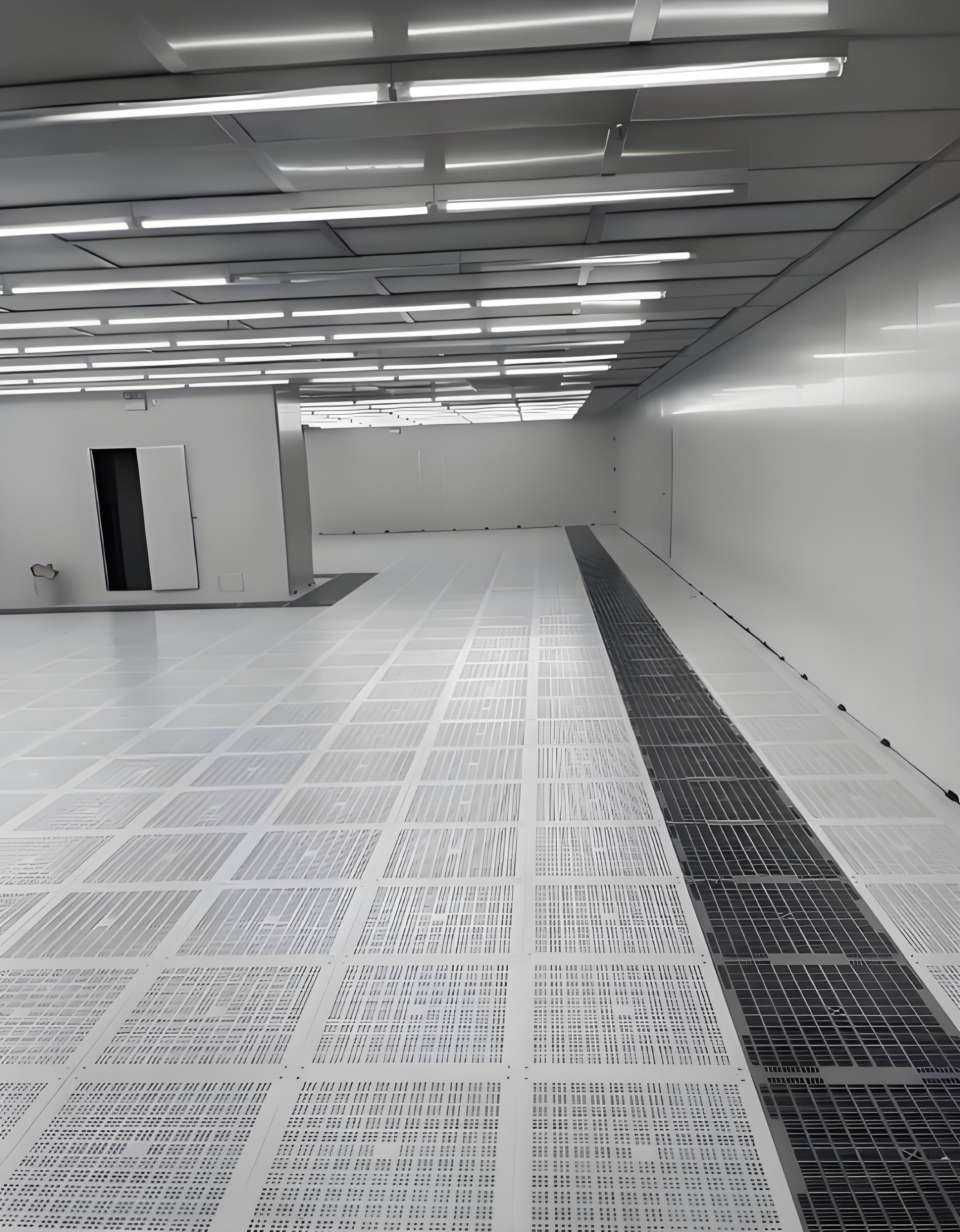Cleanroom technology for spray painting, also known as clean rooms or sterile rooms, is a specially designed space to remove fine dust particles, harmful gases, bacteria, and other pollutants within a defined area. It simultaneously controls temperature, cleanliness, indoor pressure, airflow velocity and distribution, noise, vibration, lighting, and static electricity within specified requirements. This means that regardless of how external air conditions change, the internal space can maintain preset performance characteristics such as cleanliness, humidity, and pressure. The main function of a cleanroom is to control the cleanliness and humidity of the air that products (such as silicon chips, etc.) come into contact with, providing an optimal environment for manufacturing and production. This space is what we call a cleanroom.
Cleanroom technology for spray painting is an engineering discipline related to removing fine dust particles, harmful gases, bacteria, and other airborne contaminants within a defined space, while also controlling temperature, cleanliness, pressure, airflow velocity and distribution, noise, vibration, lighting, and static electricity within required limits. It is a specially designed space.
Cleanroom Pressure Regulations
For most clean spaces, to prevent external contamination from entering, the internal pressure (static pressure) must be maintained higher than the external pressure (static pressure). Maintaining pressure differentials generally follows these principles:
The pressure in the clean space must be higher than that in the non-clean space.
The pressure in a higher-cleanliness space must be higher than that in an adjacent lower-cleanliness space.
Doors between cleanrooms should open toward the higher-cleanliness room.
Maintaining pressure differentials depends on the supply airflow rate. This supply airflow must be sufficient to compensate for air leakage through gaps in the cleanroom at the specified pressure differential. Thus, the physical meaning of the pressure differential is the resistance encountered by leaking (or infiltrating) air passing through various gaps in the cleanroom.
Cleanroom Airflow Velocity Regulations
The airflow velocity discussed here refers to the air velocity inside the cleanroom. Airflow velocities in different clean spaces will be addressed when discussing specific equipment.
For turbulent flow cleanrooms: Since they primarily rely on air dilution to reduce contamination levels, the main concept used is air exchange rate, not directly velocity. However, there are still requirements for indoor airflow velocity:
(1) The airflow velocity at the supply outlet should not be too high. Compared to conventional air-conditioned rooms, the velocity decay should be faster, and the diffusion angle should be larger.
(2) The airflow velocity across horizontal surfaces (e.g., return airflow from side supply) should not be too high to avoid blowing settled particles back into the airstream, causing recontamination. This velocity generally should not exceed 0.2 m/s.
For laminar flow cleanrooms (also called unidirectional flow cleanrooms): Since they primarily rely on the "piston-like" pushing effect of airflow to remove contamination, the cross-sectional velocity is a crucial indicator. Previously, the U.S. Federal Standard 209 (20cB) was often referenced, specifying 0.45 m/s. However, it was recognized that the ventilation volume required to achieve such high velocities is substantial. To save energy, research is exploring ways to reduce this velocity.
In China, both the "Clean Air Technical Measures" and the "Cleanroom Design Code" stipulate:
Vertical laminar flow cleanrooms ≥ 0.25 m/s
Horizontal laminar flow cleanrooms ≥ 0.35 m/s
Research shows these regulations generally meet contamination control requirements but suggests differentiating scenarios into different levels to better reflect energy-saving goals.
Noise Control in Spray Painting Cleanroom Technology
Noise standards for cleanrooms are generally stricter than health protection standards. The goal is to ensure normal operations, meet necessary communication needs, and create a safe and comfortable working environment. Thus, the main criteria for evaluating cleanroom noise are:
Annoyance effect: Noise causing discomfort is typically divided into seven levels: extremely quiet, very quiet, fairly quiet, slightly noisy, fairly noisy, very noisy, and extremely noisy. Reactions at "very noisy" and "extremely noisy" levels are considered highly annoying. The percentage of highly annoyed people in the total population is the high annoyance rate.
Impact on work performance: Mainly assessed in three aspects: mental concentration, action accuracy, and work speed.
Communication interference: Mainly categorized as: clear/satisfactory, slightly difficult, difficult, impossible.
All three criteria use A-weighted decibels (dBA) for evaluation. In the 1950s, a spectral curve was proposed as the evaluation standard, where sound pressure levels at each octave band center frequency should not exceed the curve. Later, it was found that dBA measurements better correlate with speech interference and noise annoyance, replacing octave band sound pressure levels as the evaluation metric.
According to 1981 measurement data from the Building Physics Institute of the Chinese Academy of Building Sciences for compiling the "Cleanroom Design Code":
At 65 dBA and below, only 30% of people feel highly annoyed.
At 65–70 dBA, the impact on the three work performance aspects is minimal.
At 60 dBA and below, speech is clear and easily audible.
From 60 to 75 dBA, there is some difficulty.
Above 75 dBA, communication is very difficult.
Thus, it is recommended that cleanroom noise levels should be 65 dBA, keeping the high annoyance rate below 30%, ensuring normal communication and minimal impact on work performance.
Vibration Control in Spray Painting Cleanroom Technology
Since most work in cleanrooms requires precision and often occurs in enclosed spaces, lighting requirements are very high. Here, we briefly explain lighting methods for windowless cleanrooms:
General lighting: Lighting installed to illuminate the entire area without considering special local needs.
Local lighting: Lighting installed to increase illuminance at specific locations (e.g., workstations). However, in indoor lighting systems, local lighting is rarely used alone.
Mixed lighting: Lighting where the illuminance on the working plane is the sum of general and local lighting. According to the "Cleanroom Design Code," general lighting should account for 10%–15% of total illuminance but not less than 150 lux (lx). The unit lux (lx) is the luminous flux received per unit area.
Lighting intensity requirements in economically and technologically advanced countries are very high. For example, some U.S. cleanroom standards specify:
Class 100: 1080–1600 lx (Note: 16001x in the original may be a typo, typically 1000–1600 lx)
Class 10,000: > 1000 lx
Class 100,000: > 1000 lx
Artificial lighting at 300 lx usually works well. For higher precision requirements, 500 lx is acceptable. For areas requiring red lighting, such as photolithography in electronics, illuminance is typically 25–50 lx.
When using natural light, higher illuminance is permissible, benefiting work. Thus, future cleanroom lighting may combine artificial and natural light, reflecting energy-saving trends.
Static Control in Cleanrooms
In spray painting cleanroom technology, static-related incidents are frequent. Thus, a cleanroom's anti-static capability has become an essential quality assessment factor.
Static electricity is the phenomenon of excess charge causing an object to become electrified, due to friction or other factors disrupting its initial neutral state (where positive (+) and negative (-) charges are equal). Since these charges typically don't move, they're called static electricity.
In cleanrooms, static-related issues include:
Static shocks: Causing safety hazards and human discomfort, potentially leading to secondary injuries (e.g., falls from shocks).
Electrostatic discharge currents: Can damage or malfunction semiconductor components. For example, placing 50 P-MOS circuits in a plastic bag and shaking them resulted in 39 circuits with severe NAND gate breakdowns, a 78% failure rate. This is because semiconductor devices are highly sensitive to static discharge.
Electromagnetic interference from static discharge: Can cause noise and malfunction in electronic devices.
Light emission from static discharge: Can damage photosensitive films, etc.
Mechanical effects of static: Can clog sieves, tangle fibers, cause uneven printing, and contaminate products.
The greatest hazard from static discharge: Becoming an ignition source for flammable materials. For example, foreign statistics show that out of 86,000 uses of explosive anesthetics in operating rooms, 36 explosions occurred, 21 caused by static electricity.
Static issues mainly arise from charge generation and accumulation. Airflow, friction between air and ducts, vents, filters, friction between people and clothing, between clothing layers, and processes like grinding, spraying, jet cleaning, mixing, adhesion, and peeling—all these can generate static. Generally, materials with lower conductivity (insulators) are more prone to static buildup because charges can't easily move.
Static problems are especially severe in cleanrooms not only because many static-generating processes exist but also because many cleanroom materials like plastic floors, nylon or polyester walls and clothing have very high resistivity, making them prone to static generation and accumulation. Before recognizing cleanroom static hazards, these materials were widely used.
Overview:
Function: Controls the cleanliness and humidity of air in contact with products (e.g., silicon chips), providing an optimal environment for manufacturing.
The process of designing and constructing this space is called cleanroom technology.
Classification
Turbulent Flow Type:
Air from the AHU (Air Handling Unit) passes through ducts and HEPA filters into the cleanroom, returning through side partitions or raised floors. Airflow is non-linear, in a disordered or uneven vortex state. This type applies to Class 1,000–100,000 cleanrooms.
Advantages: Simple structure, low system construction cost, easy cleanroom expansion. In special cases, can be combined with clean workbenches to enhance room cleanliness.
Disadvantages: Fine particles from turbulent flow linger in the room, easily contaminating products. Additionally, restarting after shutdown often requires significant time to regain required cleanliness.
Laminar Flow Type: Air moves uniformly in straight lines. Air passes through 100% coverage filters into the room and returns through raised floors or side partitions. This type suits environments requiring very high cleanliness, typically Class 1–100. Two subtypes:
(1) Horizontal Laminar Flow: Air is unidirectionally supplied from filters, returning via return systems on opposite walls. Contaminants are pushed outward with the airflow, often causing heavier downstream contamination.
Advantages: Simple structure, quick stabilization after startup.
Disadvantages: Higher construction cost than turbulent flow, difficult room expansion.
(2) Vertical Laminar Flow: The entire ceiling is covered with ULPA filters, air blows downward, achieving very high cleanliness. Contaminants from production or personnel are quickly expelled without affecting other work areas.
Advantages: Easy management, quick stabilization after startup, minimal impact from operations or personnel.
Disadvantages: High construction cost, inflexible space use, ceiling structures occupy significant space, filter maintenance is more complex.
Mixed Type: Combines or concurrently uses turbulent and laminar flow, providing localized ultra-clean air.
(1) Clean Tunnel: Uses HEPA or ULPA filters to fully enclose process or work areas, elevating cleanliness to Class 10 or above, saving installation and operating costs. This type requires separating personnel work areas from product and equipment maintenance zones to avoid maintenance impacts on work quality. Most ULSI (Ultra-Large-Scale Integration) processes use this type.
Additional advantages:
A. Flexible expansion.
B. Easy equipment maintenance in dedicated zones.
(2) Clean Tube: Encases and cleans automated production lines where products pass, elevating cleanliness to Class 100 or above. Isolating products from operators and contaminant sources allows small air supply volumes to achieve good cleanliness, saving energy. Ideal for fully automated lines. Used in pharmaceuticals, food, and semiconductors.
(3) Modular Local Cleanroom (Clean Spot/Mini-Environment): Elevates process area cleanliness in Class 10,000–100,000 turbulent flow cleanrooms to Class 10–1000 or above for production. Clean benches, clean booths, and clean hoods fall under this category.
Local Cleanroom Technology
Clean Bench: Class 1–100.
Clean Booth: A small space enclosed by anti-static plastic panels in Class 10,000–100,000 turbulent flow cleanrooms, using independent HEPA or ULPA and AHU air supply to create a higher-cleanliness space (Class 10–1000). Height about 2.5m, area under 10m², with legs and casters for mobility and flexibility.
Cleanroom Air Cleanliness Standards and Classifications
Economically and technologically advanced countries and regions have their own clean air standards and classifications, such as the U.S., Japan, Western Europe, Northern Europe, Russia, etc. In China, the "Cleanroom Design Code" (GBJ73-84) was issued in 1984, significantly revised in 1996 (GB50073-2001 and later versions). In 1990, the "Cleanroom Construction and Acceptance Code" (JGJ71-90, later GB 50591) was issued as important guidance for construction and acceptance.
